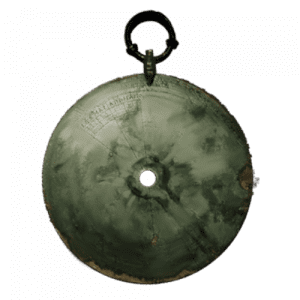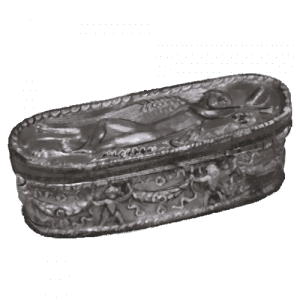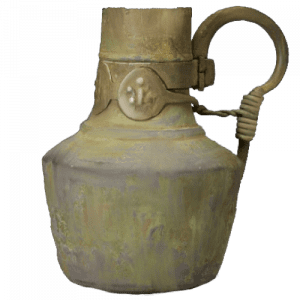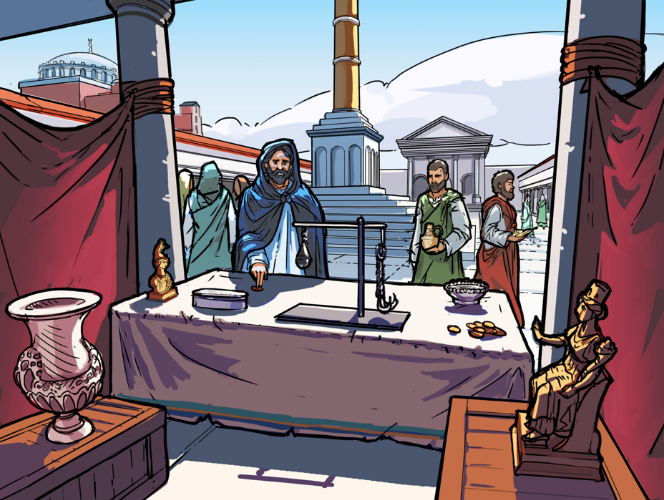Augustaion Byzantine Lesson Plan
Ancient Augustaion Byzantium
A World History Lesson Worksheet
An archaeology analysis lesson on the importance of ancient Augustaion Byzantium. Activate student interest before playing Excavate! Byzantine or use it in your ancient Byzantine world history classroom studies. Invite students to describe artifacts and hypothesize their use in ancient Byzantium. Use describe, interpret, and evaluate (D-I-E) lessons to record archaeology artifact observations during game-play or as a per-lesson activity to check their hypotheses for accuracy. It is a fun way to prepare and engage with content while playing Excavate! Byzantine.
Award Winning Excavate! Byzantine
Worth Every Penny
Loved by Thousands of Students and Educators
Augustaion Byzantine Lesson Overview
Objective:
Students will describe and infer the significance of Byzantine artifacts found in an archaeological site in preparation for playing the Augustaion site in Excavate! Byzantine or your Ancient Byzantine lessons.
Duration:
Approximately 30 minutes with a potential follow-up lesson of 20 minutes (after playing the Augustaion Byzantine site of Excavate! Byzantine or your standalone unit activity.
Materials:
This history lesson worksheet PDF document includes:
- Student D-I-E organizer
- Artifact Resource Sheet for the Augustaion Byzantine site
- Teacher answer sheet for the D-I-E organizer
Includes Ancient Byzantine lesson for Augustaion, Hagia Sofia, Oikos, and Imperial Palace
The Byzantine Artifacts
Four Artifacts for Students to Analyze in the Lesson Plan
Brass Portable Sundial
Box with Sleeping Eros

Steelyard Balance

Pilgrim Jug

Introduction: Describe
Estimated Time: 15 minutes
In this part of the worksheet activity you explain to students that they will be exploring artifacts related to the ancient city of Augustaion Byzantium. Their first job is to carefully preview the artifacts by describing them in detail.
Step 1: Students look carefully at artifacts on the Artifact Resource Sheet.
Step 2: Students write descriptions of each artifact in the describe column of the Student D-I-E Organizer. Pay close attention that students are only writing descriptions and not explaining what the artifact is and how it is used.
Step 3: Share as a class the descriptions and notice if anyone has found a new detail or something that they initially did not see. Emphasize that spending time on the description step of this process is necessary for seeing all the details that can generate new insight.
Preparing to play Excavate! Byzantine: Interpret
Estimated Time: 15 Minutes
Playing the game is of course optional but if you can incorporate the game into your lesson unit it works best.
Step 4: Students hypothesize what each artifact would have been used for by answering the questions in the Interpret column of the Student D-I-E Organizer. Push students to back up their thoughts based on what they have included in their description.
Step 5: Share as a class and keep a record of what students think of each one of the artifacts. Do not correct students. Explain that as they play the game they will encounter these artifacts and will find out if their hypotheses were correct.
“Learning through the game based format really connects learners of the 21st century to education, and helps them discover things that they may not have been interested in…”
Samantha McClusky
Post-Game Recap: Evaluate
Estimated Time: 20 minutes
Step 6: Play the Augustaion Site of Excavate! Byzantine. Have students correct their interpretations on the Student D-I-E Organizer.
Step 7: Share new observations learned about each artifact while playing Excavate! Byzantine.
Step 8: Have students complete the Evaluate column in the Student D-I-E Organizer. See examples on the Teacher Answer Sheet.
This activity could be extended as follows:
Facilitate discussion on the importance of Augustaion society and how these artifacts have facilitated new insight.
Have students write a reflection on which artifact was the most surprising and why.
Sample Artifact Answer Key
Note: the PDF download contains all keys
Item:

Describe: What is the material of the artifact? What is its shape? Does it have any symbols?
Bronze, round, and has marks all around it
____________
Interpret:
What is it used for? What is this object?
It was a tool. It was portable.
____________
Evaluate:
What does the artifact tell us about the people that used this artifact? What does the artifact possibly tell them about their society?
Teacher Reveal: This artifact has the names of 36 cities from the Byzantine Empire engraved on it with their latitudes. The other side has a quadrant scale and the months of the Julian calendar. This was a sundial used to tell the time.

Did you know?
The Augustaion in Constantinople was the main square of the city and functioned as an open-air market or “agora”. Constantinople was strategically located on a peninsula that connected Europe and Asia. Because of this, it was a center of trade and business.
Teacher Resources
Artifact Based Question Prompts
These are additional lesson plan worksheets provided by DiG-iT! Games. Use this scene combined with artifacts from the game to have your students answer a DBQ assignment that will demonstrate their learning. (rubric included)
Teacher & Content Guide
A step-by-step guide for game-play as well as a resource containing all content and answers. (2 Files – Excavate Overview & Byzantine Content Guide)
The Byzantine Legacy
Supplemental information on the Augustaion (or Augusteum) that was enclosed open space in Constantinople. Includes text and images.
Historical Map References
Explore the geographic locations of the remnants of the City of Constantine
World History Games
Explore all the Excavate! game titles including the empires of Rome, Greece, Egypt, Mesopotamia, MesoAmerica and Byzantine.


